Are you wondering if it’s safe to share your sandwich with your furry friend? Can dogs indulge in that leftover bread crust without worry? Let’s dive into the world of canine nutrition and explore whether wheat is a suitable addition to your dog’s diet.
Contents Overview
Understanding Wheat and Its Nutritional Value
Wheat, a staple in many human diets, is a cereal grain widely cultivated for its versatility. It’s present in various forms, from whole wheat flour to refined white flour, and serves as a primary ingredient in numerous food products.
- Wheat contains carbohydrates, proteins, fiber, vitamins, and minerals.
- It’s a rich source of dietary fiber, aiding digestion and promoting bowel regularity.
- The protein content in wheat contributes to muscle growth and repair in dogs.
- Wheat also provides essential vitamins such as B vitamins (niacin, thiamine, riboflavin) and minerals like iron and magnesium.
- These nutrients support overall health and vitality in dogs when consumed in appropriate amounts.
Is Wheat Safe for Dogs?
Wheat can be safe for many dogs, but it’s not suitable for all pups. While some dogs can digest wheat without any issues, others may be allergic or sensitive to it. Allergic reactions to wheat can cause itching, skin problems, or digestive upset in some dogs. If your furry friend has a wheat allergy or sensitive stomach, it’s best to avoid wheat and opt for alternative grains like rice or oats. Always monitor your dog’s response to new foods and consult with your veterinarian if you have any concerns about their diet.
Benefits of Including Wheat in Your Dog's Diet
While wheat has garnered some controversy in the realm of canine nutrition, it also offers several potential benefits when included in your dog’s diet. Let’s explore the positive aspects of incorporating wheat into your furry friend’s meals:
- Nutritional Value
Wheat serves as a rich source of essential nutrients beneficial for canine health, including:
- Carbohydrates: Wheat provides a readily available energy source, supporting your dog’s daily activities and vitality.
- Protein: Although not as protein-dense as animal-based sources, wheat contains notable levels of this macronutrient, contributing to muscle maintenance and overall well-being.
- Fiber: With its fiber content, wheat aids in digestion and promotes gastrointestinal health by regulating bowel movements and preventing constipation.
- Cost-Effective Nutrition
As a widely cultivated crop, wheat remains a cost-effective ingredient in many commercially available dog foods and treats. Its affordability makes it accessible to pet owners seeking nutritious options without breaking the bank.
- Palatability and Texture
Wheat can enhance the palatability and texture of dog food, making it more appealing to your furry companion. Its binding properties help form cohesive kibble and treats, ensuring a satisfying chewing experience for dogs of all sizes.
- Variety in Diet
Including wheat in your dog’s diet adds variety to their meals, preventing dietary monotony and boredom. Rotating different sources of carbohydrates, including wheat, rice, and potatoes, can keep mealtime exciting and may reduce the risk of developing food sensitivities.
- Supporting Digestive Health
Contrary to popular belief, many dogs tolerate wheat well and derive benefits from its inclusion in their diet. For dogs without wheat allergies or sensitivities, this grain can support digestive health by providing fiber and promoting regularity.
- Balanced Nutrition
When combined with other high-quality ingredients, wheat contributes to a balanced and nutritious diet for your dog. Opting for dog foods formulated by reputable brands ensures that your pet receives the essential nutrients they need for optimal health and well-being.
Safe Ways to Feed Wheat to Dogs
While some dogs may thrive on diets that include wheat, it’s crucial to ensure its safe consumption. Here are some guidelines for incorporating wheat into your dog’s diet responsibly:
- Choose High-Quality Sources
Opt for dog foods and treats made with high-quality, whole wheat ingredients. Look for products from reputable brands with transparent sourcing and manufacturing processes to ensure the wheat used is free from contaminants and additives.
- Monitor Portion Sizes
Like any other ingredient, moderation is key when feeding wheat to your dog. Monitor portion sizes to prevent overconsumption, which can lead to weight gain and digestive issues. Follow feeding guidelines provided by the manufacturer or consult with your veterinarian for personalized recommendations.
- Introduce Gradually
If you’re introducing wheat into your dog’s diet for the first time, do so gradually to monitor their response. Start with small amounts and observe for any signs of allergic reactions or digestive upset. Increase the quantity slowly over several days as your dog adjusts to the new food.
- Monitor for Allergic Reactions
Watch for symptoms of wheat allergies, including itching, redness, ear infections, and gastrointestinal disturbances. If your dog exhibits any adverse reactions after consuming wheat, discontinue feeding it and consult with your veterinarian for guidance on alternative dietary options.
- Consider Whole Wheat Options
Whole wheat contains more nutrients and fiber than refined wheat products. When possible, choose dog foods and treats that incorporate whole wheat or other whole grains to provide additional nutritional benefits and promote digestive health.
- Homemade Treats
Prepare homemade treats using wheat flour alternatives or whole wheat flour to control the ingredients and ensure their quality. Experiment with recipes that use oats, rice flour, or alternative flours like coconut or chickpea to provide variety in your dog’s diet while avoiding potential allergens.
- Monitor Overall Diet
Ensure that wheat is just one component of a balanced and varied diet for your dog. Incorporate a mix of protein sources, healthy fats, fruits, and vegetables to provide essential nutrients and meet your dog’s nutritional requirements. Consult with your veterinarian for guidance on formulating a well-rounded diet tailored to your pet’s needs.
Precautions and Considerations
While wheat can be a part of a balanced diet for many dogs, it’s essential to approach its inclusion with caution. Here are some precautions and considerations to keep in mind when feeding wheat to your furry companion:
- Allergies and Sensitivities
- Watch for Signs of Allergic Reactions: Be vigilant for symptoms such as itching, redness, swelling, vomiting, diarrhea, or ear infections, which may indicate an allergic reaction to wheat.
- Consult with Your Veterinarian: If you suspect your dog has a wheat allergy or sensitivity, consult with your veterinarian for proper diagnosis and guidance on alternative dietary options.
- Digestive Health
- Monitor Digestive Upset: Some dogs may experience gastrointestinal disturbances when introduced to wheat. Watch for signs such as bloating, gas, diarrhea, or constipation, and adjust their diet accordingly.
- Introduce Gradually: When introducing wheat into your dog’s diet, do so gradually to allow their digestive system to adapt. Start with small amounts and increase gradually while monitoring their response.
- Quality and Sourcing
- Choose High-Quality Products: Select dog foods and treats made with high-quality, whole wheat ingredients to ensure their nutritional value and safety.
- Check for Additives and Contaminants: Avoid products containing artificial additives, preservatives, or contaminants that may compromise the quality of the wheat used.
- Portion Control
- Moderate Portion Sizes: Control the amount of wheat your dog consumes to prevent overconsumption and potential weight gain. Follow feeding guidelines provided by the manufacturer or consult with your veterinarian for personalized recommendations.
- Alternative Options
- Consider Grain-Free Formulations: If your dog has a known sensitivity to wheat or grains, explore grain-free dog food options that use alternative carbohydrate sources such as sweet potatoes, peas, or tapioca.
- Experiment with Homemade Treats: Prepare homemade treats using wheat-free or alternative flour options such as oats, rice flour, coconut flour, or chickpea flour to provide variety in your dog’s diet while avoiding potential allergens.
- Regular Monitoring
- Observe Your Dog’s Health: Keep a close eye on your dog’s overall health and well-being, including their coat condition, energy levels, and bowel movements. Any changes may indicate a reaction to their diet, including the inclusion of wheat.
- Consult with Your Veterinarian: If you have any concerns or questions about feeding wheat to your dog, don’t hesitate to consult with your veterinarian for personalized advice and recommendations tailored to your pet’s specific needs.
Alternatives to Wheat for Dogs
- Rice: Easily digestible and provides energy.
- Oats: Rich in fiber, low allergenicity, and versatile for cooking or treats.
- Barley: Nutrient-dense, good for digestion, and adds variety to meals.
- Quinoa: Complete protein source, gluten-free, and nutrient-rich.
- Sweet Potatoes: Nutrient-packed, low glycemic index, and naturally sweet.
- Peas and Legumes: Plant-based protein, high fiber, and various options like green peas, lentils, and chickpeas.
Bottom Line
In conclusion, while wheat may be a common dietary staple for humans, its suitability for dogs varies depending on individual factors. While some dogs may tolerate wheat well and even derive nutritional benefits from it, others may experience adverse reactions or have underlying sensitivities. As responsible pet owners, we must prioritize our dog’s health and well-being by making informed decisions about their diet. When in doubt, always consult with your veterinarian to ensure that your dog’s nutritional needs are met without compromising their health.







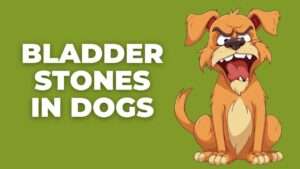
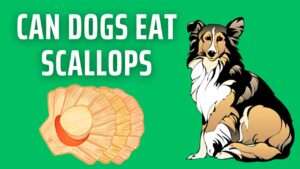

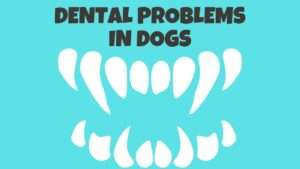





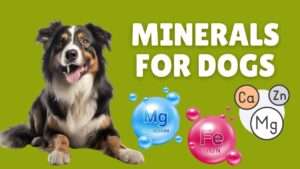
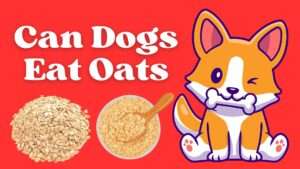


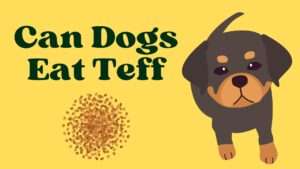




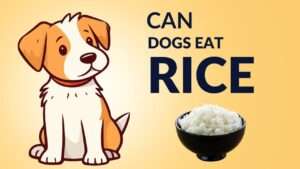








+ There are no comments
Add yours